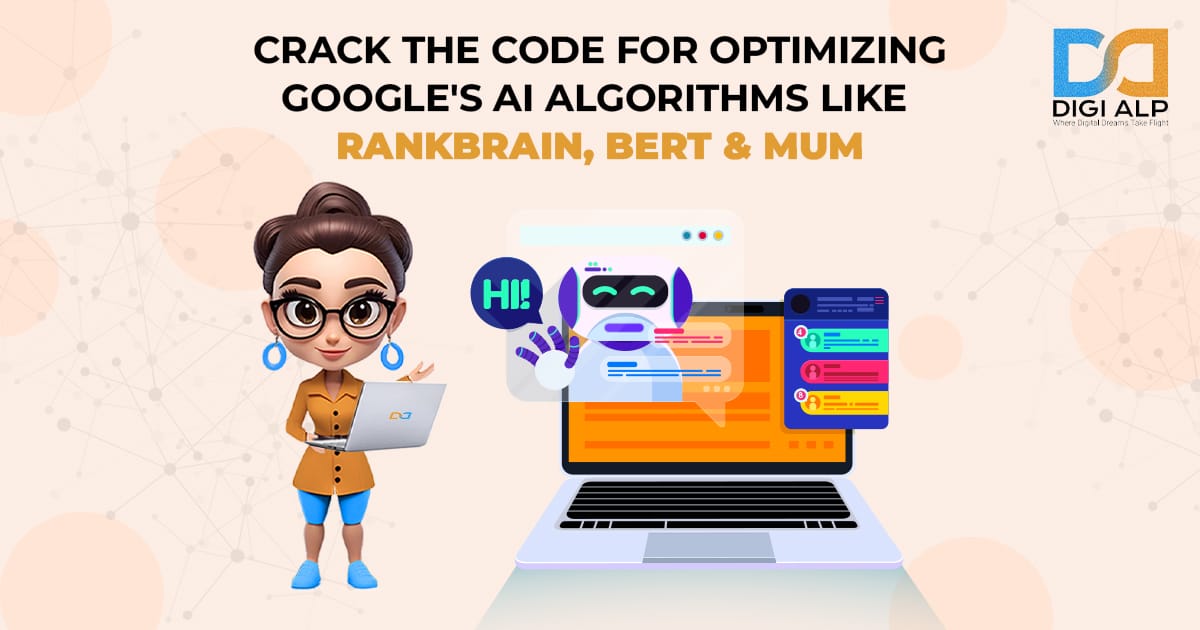In the world of SEO, change is the only constant — and Google’s AI-driven algorithms like RankBrain, BERT, and MUM have redefined what it takes to rank high on search engine results pages (SERPs). If you’re looking for a solution to your ranking problems, you’re in the right place. Gone are the days when simple keyword stuffing could get you to the top. Today, it’s about understanding how Google thinks, learns, and processes content.
If you want to stay ahead in 2025 and beyond, you need to crack the code of these powerful AI systems. This blog offers a proven strategy to fix ranking issues by understanding how each algorithm works — and how to optimize accordingly.
Understanding Google’s AI Algorithms
Before we get into optimization strategies, it’s important to grasp the basics of each algorithm — the core of solving search ranking challenges:
1. RankBrain (2015)
Google’s first machine learning algorithm. RankBrain helps interpret new or ambiguous queries by analyzing user behavior and context. It’s a key ranking factor, especially for long-tail searches and vague intent.
2. BERT (2019)
BERT (Bidirectional Encoder Representations from Transformers) enhances Google’s understanding of natural language. It’s especially helpful when users ask nuanced or conversational questions.
3. MUM (2021)
MUM (Multitask Unified Model) takes things further. It understands text, images, and video — across 75+ languages. If you’re not optimizing for multimedia, you’re missing a crucial opportunity to boost rankings.
Why Understanding These Matters for SEO
Each AI advancement redefines how we must optimize:
- RankBrain demands content that matches user intent.
- BERT values natural, conversational content.
- MUM looks for expertise, relevance, and diverse media formats.
So, if you’re searching for the ultimate solution to your ranking problems, understanding these systems is the first step.
How to Optimize for RankBrain
🎯 Focus on User Intent
To truly solve ranking issues, your content must satisfy what users actually want — not just the words they type.
- Anticipate why users are searching.
- Create actionable, solution-driven content.
📈 Improve User Engagement
RankBrain pays attention to engagement metrics:
- Use eye-catching meta titles to increase click-through rate.
- Provide value upfront to reduce bounce rate.
- Use visuals, bullet points, and summaries to increase dwell time.
🗣️ Write Naturally
Forget keyword stuffing. If you want to rank better, your content should feel human and authentic.
How to Optimize for BERT
🧠 Write for People, Not Machines
BERT rewards clarity and natural language. It’s a direct solution to ranking problems caused by robotic or keyword-heavy content.
🔖 Structure Content Clearly
Use clear headings, short paragraphs, and list formats to enhance readability and rank higher in featured snippets.
🔍 Target Long-Tail Keywords
Instead of competing for generic terms, aim for queries that mirror real user intent — a smart strategy to fix low-ranking content.
How to Optimize for MUM
🎥 Diversify Content Types
Want to solve ranking challenges in 2025? Think beyond text.
- Use videos, infographics, and high-quality images.
- Add descriptive alt text to make content MUM-friendly.
📚 Build Topical Authority
MUM favors websites that demonstrate expertise:
- Create comprehensive pillar pages.
- Interlink content to show depth and coverage.
🌍 Optimize for Multilingual Search
If you have a global audience, localized content is a powerful ranking solution:
- Translate articles with cultural context.
- Optimize regional SEO elements like hreflang tags.
Tools That Help Solve Ranking Problems
You don’t have to decode Google alone. Use tools that support AI-driven SEO:
- SurferSEO: Optimizes your content structure based on SERPs.
- Frase: Helps tailor content to answer user queries effectively.
- MarketMuse: Builds authority through structured content clusters.
- Clearscope: Enhances your writing with NLP-based keyword suggestions.
These tools are designed to be a direct solution to your ranking problems — streamlining your content creation to match Google’s AI expectations.
Final Thoughts: Adapt or Get Left Behind
Google’s AI-powered algorithms aren’t just part of SEO — they are SEO. If your content isn’t ranking, it’s likely because it’s not aligned with how AI understands it.
✅ Want a real solution to your ranking problems?
Start by:
- Writing for users, not just algorithms
- Focusing on intent, clarity, and authority
- Embracing multimedia and multilingual formats
Don’t chase algorithms — understand them. The better your content aligns with AI systems like RankBrain, BERT, and MUM, the faster you’ll climb back up the rankings.






Tender thanks you an eye to sharing this!
thanks! its a great help for learning algo scenes.
best piece of info